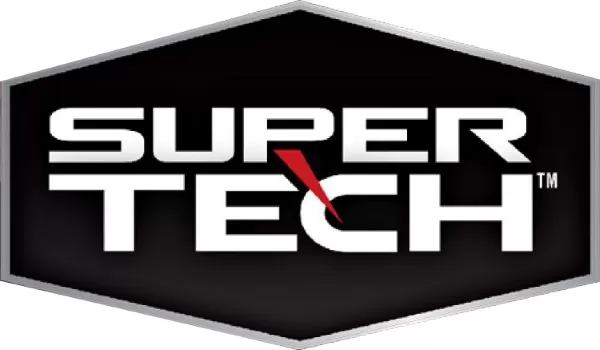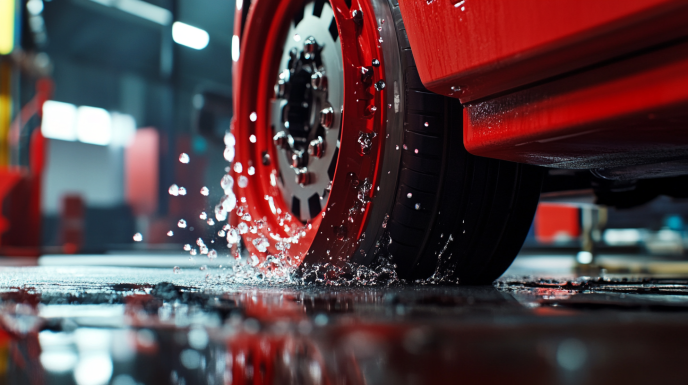
Super Tech R-134a Refrigerant, 12 oz.
- SuperTech R-134a Refrigerant 12 oz.
- Use only a self-sealing can tap or self-sealing valve recharge hose
- Do not mix with R12 or any other refrigerant; or air
- Can be used in a automotive air conditioning system that uses R-134a
- Always wear gloves and safety goggles while using
- Do not overcharge the system.
- Follow the instructions provided on the can
Understanding the Lifeline of Your Vehicle’s Air Conditioning System
There’s nothing quite like the relief of sliding into your car on a scorching summer day and feeling that first blast of cold air from your AC. Behind that simple comfort lies a complex system powered by an unassuming hero: refrigerant. Today, we’re diving deep into everything you need to know about Super Tech R134a, the refrigerant that keeps millions of vehicles cool across America.
As someone who’s spent countless weekends under the hood of my own vehicles and helping friends troubleshoot their AC issues, I’ve come to appreciate the critical role that quality refrigerant plays in keeping our drives comfortable. Let’s explore why Super Tech R134a has become a go-to choice for DIY mechanics and professionals alike.
What Exactly Is Super Tech R134a Refrigerant?
Super Tech R134a is a hydrofluorocarbon (HFC) refrigerant specifically designed for automotive air conditioning systems. To understand its importance, we need to step back and look at the evolution of automotive refrigerants.
For decades, R12 (Freon) was the industry standard until environmental concerns led to its phase-out in the 1990s. R134a emerged as the replacement, offering comparable cooling performance without the same ozone-depleting properties. Super Tech R134a is Walmart’s brand of this refrigerant, manufactured to meet all the necessary industry specifications while offering consumers a more budget-friendly option.
The primary purpose of Super Tech R134a is to absorb heat from inside your vehicle and release it outside, creating the cooling effect we all appreciate during hot weather. This seemingly simple process involves a sophisticated cycle of state changes and pressure variations that exemplifies thermodynamic principles in action.
The Science Behind the Chill: How Super Tech R134a Works
Understanding how refrigerant works helps appreciate why using the right product matters. Your vehicle’s air conditioning system is essentially a closed loop with several key components:
- Compressor: This pump pressurizes the refrigerant, transforming it from a low-pressure gas to a high-pressure, high-temperature gas.
- Condenser: Located at the front of your vehicle, this component allows the hot, pressurized refrigerant to release heat to the outside air and condense into a high-pressure liquid.
- Expansion valve or orifice tube: This creates a pressure drop, allowing the refrigerant to expand and cool rapidly.
- Evaporator: Inside your dashboard, the cold refrigerant absorbs heat from the cabin air blown across the evaporator coils, cooling the air that enters your vehicle.
Super Tech R134a excels in this cycle because of its thermodynamic properties. At low pressure, it evaporates at approximately -15.7°F (-26.5°C), making it perfect for absorbing heat inside your vehicle. When compressed, it can be condensed back into a liquid at reasonable pressures, even on hot days.
The refrigerant continuously cycles through these states, carrying heat from inside your vehicle to the outside environment. What makes R134a special is its ability to undergo these phase changes efficiently within the temperature and pressure ranges common to automotive applications.
Where to Purchase Super Tech R134a
The accessibility of Super Tech R134a is one of its major advantages. As Walmart’s house brand, it’s readily available at virtually all Walmart stores nationwide in the automotive section. You can typically find it in several formats:
- 12-ounce cans (most common for DIY use)
- Multi-can packages
- Cans with attached gauge and hose assemblies for easier DIY application
The widespread availability makes it particularly convenient when you’re dealing with an unexpected AC issue during a road trip or need to top off your system on short notice. While you can occasionally find it through third-party sellers online, purchasing directly from Walmart typically offers the best pricing.
Cost-wise, Super Tech R134a is positioned as a value option, generally priced 10-20% lower than name-brand alternatives like Dupont or Honeywell products. A standard 12-ounce can typically costs between $5-8, while cans with attached gauges usually range from $20-30.
Compatibility: Will Super Tech R134a Work in My Vehicle?
Compatibility is a crucial consideration when selecting any automotive refrigerant. The good news is that Super Tech R134a is designed to work with all vehicles manufactured to use R134a refrigerant. This includes:
- Most passenger vehicles manufactured from 1994 to 2020
- Many light trucks and SUVs from the same period
- Some older vehicles that have been converted from R12 to R134a systems
How can you determine if your vehicle uses R134a? There are several ways:
- Check your owner’s manual – The specifications section will indicate the type and amount of refrigerant required.
- Look for service port fittings – R134a systems have unique fitting sizes that differ from older R12 systems or newer R1234yf systems.
- Find the underhood sticker – Most vehicles have a sticker in the engine compartment that specifies the refrigerant type and capacity.
- Manufacturing date – Generally, passenger vehicles manufactured between 1994 and 2020 use R134a. Vehicles produced after 2021 typically use R1234yf, though the transition began gradually around 2015.
It’s worth noting that while Super Tech R134a is compatible with all R134a systems, it’s not compatible with newer R1234yf systems or older R12 systems without proper conversion. Using the wrong refrigerant can damage your AC system and potentially void warranties, so proper identification is essential.
The Proper Way to Use Super Tech R134a
Recharging your AC system with Super Tech R134a isn’t particularly difficult, but following the proper procedure ensures safety and effectiveness. Here’s a step-by-step guide:
Preparation Steps
- Gather your supplies: You’ll need Super Tech R134a (with or without an attached gauge), safety glasses, and gloves. If your refrigerant doesn’t include a gauge, you’ll need a separate gauge set or pressure gauge.
- Find the low-pressure service port: This is typically located on the larger diameter pipe (suction line) between the evaporator and compressor. It’s usually on the passenger side of the engine compartment and has a blue or black plastic cap.
- Start the engine and turn the AC to maximum cooling: Set the fan to high speed and ensure all vents are open.
Charging Process
- Check current pressure: With the system running for 5-10 minutes, attach your gauge to the low-pressure service port and read the pressure. Compare this reading to the manufacturer’s specifications (typically found on an underhood sticker).
- Connect the refrigerant can: If using a can with an attached gauge/hose, follow the specific attachment instructions. For separate gauge sets, connect according to the gauge instructions.
- Add refrigerant gradually: Turn the can upright (valve at the top) and dispense small amounts of refrigerant into the system, pausing frequently to check the pressure. Some cans require you to shake them periodically during this process.
- Monitor the vent temperature: As you add refrigerant, the air coming from your vents should gradually become colder. The ideal temperature is typically between 40-45°F (4-7°C).
- Stop at the proper pressure: Once you reach the manufacturer’s specified pressure (typically 25-45 PSI depending on ambient temperature), stop adding refrigerant. Overcharging can damage your system.
- Check for leaks: After charging, inspect all accessible connections with a leak detector or soapy water solution.
Common Mistakes to Avoid
- Overcharging the system: This reduces efficiency and can damage components.
- Charging through the high-pressure port: This can be dangerous and damage your equipment.
- Adding refrigerant to a system with major leaks: Fix significant leaks before recharging.
- Using with the wrong oil: Super Tech R134a contains PAG oil, which is compatible with most systems but not all.
Remember that proper charging isn’t just about adding refrigerant until cold air blows—it’s about achieving the manufacturer’s specified pressure, which varies based on ambient temperature.
The Benefits of Choosing Super Tech R134a
When compared to other refrigerant options, Super Tech R134a offers several distinct advantages:
Cost-Effectiveness
The most obvious benefit is the price point. Super Tech R134a typically costs 10-20% less than premium brands while meeting the same performance standards. For DIY mechanics working on multiple vehicles or requiring frequent top-offs, these savings can be substantial over time.
Performance Reliability
Despite its lower price, Super Tech R134a meets all required industry standards for R134a refrigerant. It contains the proper lubricants (PAG oil) needed for compressor operation and maintains cooling efficiency comparable to higher-priced alternatives.
Availability and Convenience
The widespread availability through Walmart’s extensive retail network means you’re rarely far from a supply source. This convenience is particularly valuable during unexpected AC issues or emergency repairs.
System Compatibility
Super Tech R134a is fully compatible with all automotive systems designed for R134a refrigerant, requiring no special adaptations or concerns about compatibility with system components.
Industry Standards and Quality Assurance
A common question about any value-branded product concerns its adherence to industry standards. For automotive refrigerants, these standards are particularly important as they impact both performance and safety.
Super Tech R134a is manufactured to meet all AHRI-700 standards (Air Conditioning, Heating, and Refrigeration Institute) for purity and composition. This standard ensures the refrigerant contains the proper balance of R134a and does not contain contaminants that could damage your system.
Additionally, the product complies with SAE (Society of Automotive Engineers) standards for automotive refrigerants, particularly SAE J2776 for R134a purity requirements and SAE J2099 for lubricant compatibility.
These standards mean that despite its lower price point, Super Tech R134a delivers performance equivalent to premium brands in terms of cooling efficiency, system compatibility, and longevity.
Longevity: How Long Will Super Tech R134a Last?
The lifespan of refrigerant in your system depends on several factors:
In a Properly Sealed System
In a perfectly sealed automotive AC system with no leaks, refrigerant should theoretically last the lifetime of the vehicle. R134a doesn’t “wear out” or degrade during normal operation—it continuously cycles through the system.
However, real-world conditions are rarely ideal. Even well-maintained systems typically lose a small amount of refrigerant (about 0.5-1.5 ounces per year) through microscopic seepage at connection points. This natural seepage is why many vehicles require a minor recharge every 2-5 years, even without obvious leaks.
Factors Affecting Refrigerant Lifespan
Several factors can impact how long your Super Tech R134a charge will last:
- System age: Older systems generally lose refrigerant faster as seals and O-rings age.
- Usage patterns: Systems used daily in hot climates work harder and may experience more stress on components.
- Maintenance history: Regular maintenance helps identify small issues before they lead to significant refrigerant loss.
- Quality of previous repairs: Properly performed previous repairs with correct torque specifications help maintain seal integrity.
Shelf Life of Unused Refrigerant
Unopened cans of Super Tech R134a have an extensive shelf life—typically 10+ years when stored in a cool, dry environment away from direct sunlight. The refrigerant itself doesn’t degrade, though extremely long-term storage might potentially affect the can integrity or any included additives.
Can Super Tech R134a Fix Leaking AC Systems?
This is perhaps one of the most common questions about refrigerant products. The standard Super Tech R134a refrigerant by itself does not seal leaks. It is simply a refrigerant designed to replace lost cooling capacity.
However, Super Tech does offer a variant called “Super Tech R134a with Leak Sealer” that contains additives designed to address minor leaks. Here’s what you should know about leak sealing products:
How Leak Sealers Work
Refrigerant leak sealers typically contain compounds that react with moisture at leak points to form a seal. These compounds remain dormant within the system until they encounter the combination of refrigerant, air, and moisture that exists at leak points.
Effectiveness and Limitations
Leak sealers can be effective for extremely small leaks, particularly around rubber seals, O-rings, and gaskets. They’re most successful with:
- Slow, seeping leaks that cause gradual refrigerant loss
- Leaks at rubber connection points
- Minor seepage around threaded connections
However, they have significant limitations:
- Cannot repair mechanical damage to components
- Ineffective for moderate to large leaks
- Not suitable for fixing damaged condensers, evaporators, or compressors
- May potentially clog expansion valves or orifice tubes in some situations
The consensus among professional mechanics is that leak sealers should be considered a temporary solution at best, and proper mechanical repairs remain the recommended approach for addressing system leaks.
Super Tech R134a vs. Other Refrigerants
The refrigerant landscape has evolved significantly over the past few decades due to environmental regulations and technological advancements. Here’s how Super Tech R134a compares to other refrigerants:
R134a vs. R12 (Freon)
R12 was the predecessor to R134a and was phased out due to its ozone-depleting properties. Compared to R12:
- R134a is less efficient (requires about 10% more refrigerant by weight)
- R134a operates at higher pressures
- R134a requires different lubricants (PAG oil vs. mineral oil)
- R134a is significantly better for the environment
R134a vs. R1234yf
R1234yf is the newer refrigerant being phased in for newer vehicles. Compared to R134a:
- R1234yf has a much lower Global Warming Potential (GWP of 4 vs. 1,430 for R134a)
- R1234yf is significantly more expensive (often 3-5 times the cost)
- R1234yf has slightly different pressure/temperature relationships
- R1234yf has mild flammability concerns not present with R134a
Super Tech R134a vs. Name Brand R134a
When comparing Super Tech to premium brands like Dupont or Honeywell:
- Composition and purity standards are identical (all must meet AHRI-700 standards)
- Performance characteristics are effectively the same
- Included lubricants may vary slightly in formulation but serve the same function
- Price is the main differentiator, with Super Tech offering 10-20% savings
Environmental Considerations
Environmental impact is an increasingly important consideration for automotive products. R134a, including Super Tech’s version, has a mixed environmental profile:
Ozone Depletion Potential
Unlike its predecessor R12, R134a has zero ozone depletion potential, which was the primary reason for its adoption in the 1990s.
Global Warming Potential
R134a has a relatively high Global Warming Potential (GWP) of 1,430, meaning it’s 1,430 times more potent as a greenhouse gas than carbon dioxide. This high GWP is the primary reason newer vehicles are transitioning to R1234yf, which has a GWP of only 4.
Regulatory Status
R134a is being phased out gradually in new vehicles (started around 2015-2020 depending on the manufacturer), but it remains legal for servicing existing systems designed for it. There are currently no plans to ban the sale or use of R134a for existing vehicles, meaning Super Tech R134a will remain a viable option for many years to come.
Responsible Usage
The environmental impact of R134a is only realized if it escapes into the atmosphere. Responsible use includes:
- Promptly repairing leaks rather than repeatedly recharging
- Having professionals recover refrigerant during major repairs rather than venting
- Proper disposal of empty refrigerant containers
- Considering system conversion to newer refrigerants during major AC system rebuilds
Can I Use Super Tech R134a in Home AC Systems?
This is an important question with a straightforward answer: No, Super Tech R134a should not be used in home air conditioning systems.
Home air conditioning systems typically use completely different refrigerants—usually R22 (being phased out) or R410A (current standard). These systems:
- Operate at drastically different pressures
- Have different component designs
- Require different lubricants
- Need specific refrigerant properties for their design parameters
Using automotive R134a in a home system could:
- Cause system failure due to pressure mismatches
- Create incompatibilities with existing lubricants
- Result in poor cooling performance
- Potentially damage the compressor
- Void any warranties or insurance coverage
The only appropriate use for Super Tech R134a is in automotive applications designed for R134a refrigerant.
Safety Precautions When Using Super Tech R134a
Working with any refrigerant requires certain safety considerations. When using Super Tech R134a:
Personal Protective Equipment
- Always wear safety glasses: Liquid refrigerant can cause freezing eye injuries if it splashes.
- Use gloves: Direct contact with liquid refrigerant can cause frostbite-like injuries to skin.
- Work in well-ventilated areas: While R134a is not highly toxic, concentrated vapors can displace oxygen in confined spaces.
Handling Precautions
- Never expose cans to high heat: Temperatures above 120°F (49°C) can cause pressure buildup and potential can rupture.
- Store upright in cool, dry places: Proper storage extends shelf life and prevents valve damage.
- Keep away from open flames: While R134a is not flammable, it can decompose into harmful compounds at very high temperatures.
- Never mix refrigerants: Each type has specific properties and mixing can cause system damage and unpredictable pressures.
Emergency Procedures
- Skin contact: If liquid refrigerant contacts skin, flush the area with lukewarm water and seek medical attention for any frostbite symptoms.
- Eye contact: Flush with lukewarm water for at least 15 minutes and seek immediate medical attention.
- Inhalation: Move to fresh air and seek medical attention if symptoms (dizziness, shortness of breath) persist.
Remember that while DIY AC work is accessible, it involves pressurized systems and chemicals that require proper respect and handling.
Determining How Much Super Tech R134a You Need
One of the most common mistakes in DIY AC recharging is adding too much or too little refrigerant. The correct amount varies significantly between vehicle models:
Finding Specifications
The exact refrigerant capacity for your vehicle can be found in:
- The owner’s manual
- A sticker in the engine compartment (often near the radiator support)
- Service manuals
- Online databases specific to your vehicle make/model/year
Typical Quantities
As a general reference point:
- Compact cars typically require 14-18 ounces (400-510g)
- Midsize sedans typically require 16-24 ounces (455-680g)
- SUVs and larger vehicles may require 24-32+ ounces (680-910g+)
Partial Recharge Considerations
If you’re just topping off a system that’s low but not completely empty:
- Use the pressure readings on your gauge to determine when you’ve reached proper pressure
- Add refrigerant in small increments (1-2 ounces at a time)
- Allow the system to stabilize for 2-3 minutes between additions
- Stop when you reach the manufacturer’s specified pressure range
Remember that an undercharged system cools poorly, while an overcharged system can damage components and also reduce cooling efficiency. When in doubt, it’s better to slightly undercharge than overcharge, as you can always add more.
Additives in Super Tech R134a Products
Super Tech offers both standard R134a refrigerant and variants with additional compounds:
Standard Super Tech R134a
The standard product contains:
- Pure R134a refrigerant
- A small amount of PAG (Polyalkylene Glycol) oil to lubricate the compressor
- No additional additives
Super Tech R134a with Leak Sealer
This variant includes:
- R134a refrigerant
- PAG oil
- Proprietary leak sealing compounds that activate at leak points
- UV dye to help identify leak locations under ultraviolet light
Super Tech R134a with Stop Leak and Conditioner
Some variants may include:
- R134a refrigerant
- PAG oil
- Leak sealing compounds
- Additives that claim to condition rubber seals and O-rings
- UV dye
The effectiveness of conditioners is debated among professionals, with some believing they can extend the life of rubber components while others consider them unnecessary or potentially problematic in some systems.
Reviews and User Experiences with Super Tech R134a
The consumer experience with Super Tech R134a has been generally positive, with certain consistent themes emerging:
Positive Feedback
Most users report:
- Comparable performance to premium brands at a lower price point
- Good cooling efficiency once properly charged
- Easy-to-use packaging, particularly with the gauge-attached cans
- Value for money when maintaining multiple vehicles
Critical Feedback
Some criticisms include:
- Gauge reliability issues on some of the gauge-equipped cans
- Inconsistent quantities in some cans (slightly under or over the stated amount)
- Mixed results with leak sealer variants, with effectiveness varying by leak type and size
Professional Opinions
Professional mechanics often take a middle ground:
- Many acknowledge it works effectively for proper R134a applications
- Some prefer name brands for customer perception reasons
- Most agree the refrigerant itself meets all necessary specifications
- Many suggest the basic product without additives for routine maintenance
Signs Your AC Needs Super Tech R134a
Knowing when to add refrigerant is important for maintaining your vehicle’s AC performance. Here are the primary indicators your system might be low:
Reduced Cooling Performance
- Air not as cold as it used to be: System still works but doesn’t reach the same low temperatures
- Longer cooling times: Car takes much longer to reach comfortable temperatures
- Inconsistent cooling: Cold air that occasionally “cycles” to warmer air
Technical Indicators
- Low pressure readings on the low-pressure side of the system (requires a gauge)
- Compressor cycling on and off more frequently than normal
- Visible frost or condensation only on part of the evaporator or lines (indicating uneven refrigerant flow)
Important Caution
Remember that refrigerant doesn’t get “used up” during normal operation—it circulates in a closed loop. If your system needs frequent recharging, you have a leak that should be addressed. Using Super Tech R134a repeatedly without fixing the underlying leak is:
- Environmentally harmful as the leaked refrigerant enters the atmosphere
- Potentially damaging to your AC components due to low lubricant levels
- Costly over time compared to a proper repair
- Potentially contributing to larger system failures
Conclusion: Is Super Tech R134a Right for Your Vehicle?
After this comprehensive exploration of Super Tech R134a, we can draw some clear conclusions about its suitability for different situations:
Super Tech R134a is an excellent choice for:
- Routine maintenance of properly functioning AC systems
- Budget-conscious DIY mechanics
- Topping off systems with minor, slow refrigerant loss
- Vehicles manufactured between 1994-2020 designed for R134a
Super Tech R134a is not appropriate for:
- Systems designed for other refrigerants (R12, R1234yf, R22, R410A, etc.)
- Systems with significant mechanical damage
- Home or commercial air conditioning systems
- Systems under manufacturer warranty that specify OEM refrigerant
The most important thing to remember is that using the right refrigerant for your specific system, in the correct amount, and with proper charging techniques will yield the best results, regardless of brand.
Whether you choose Super Tech R134a or another brand, following proper procedures and addressing any underlying issues will ensure your air conditioning system provides reliable cooling for years to come. That first blast of cold air on a hot summer day is one of driving’s simple pleasures—and with proper maintenance, it’s one you can continue to enjoy.



